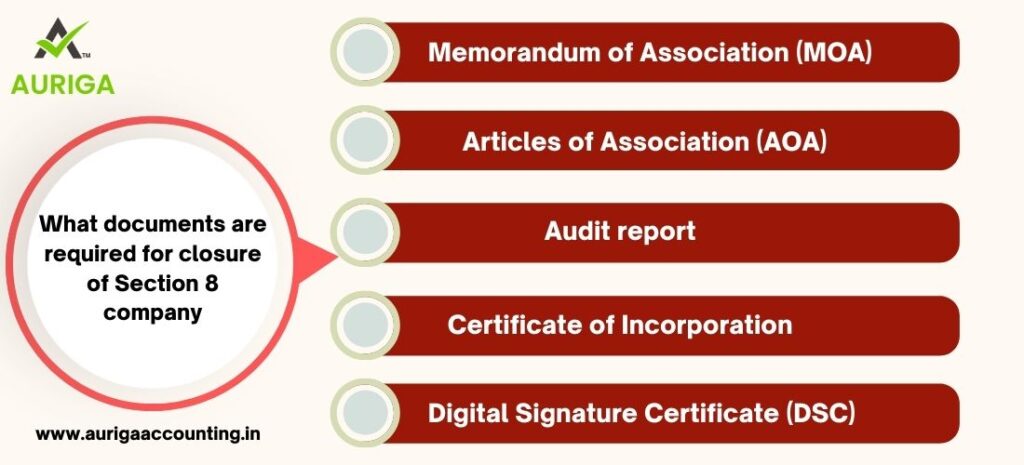
CONVERSION OFSECTION 8 COMPANY TO VICE/VERSA?
Introduction
ToggleCONVERSION OF SECTION 8 COMPANY TO VICE/VERSA?
The conversion of a Section 8 Company in India to a for-profit entity or vice versa involves a legal process governed by the Companies Act, 2013. To convert a Section 8 Company to a for-profit company, approval from the National Company Law Tribunal (NCLT) is required. The company must follow the prescribed procedures, including altering its memorandum and articles of association. Similarly, if a for-profit company wishes to convert to a Section 8 Company, it needs to meet the eligibility criteria and obtain approval from the NCLT. Professional guidance is crucial to navigate the legal intricacies of such conversions successfully. Visitofficialwebsite
PROCESS TO CONVERSION SECTION 8 COMPANY
Board Resolution: Initiate the process by holding a board meeting and passing a resolution to convert the existing entity into a Section 8 Company.
Member Approval: Convene an EGM and obtain the required majority vote (usually 75% or more) from the members to approve the conversion.
Application to ROC: Prepare and file the necessary documents, including the proposed MOA and AOA for the Section 8 Company, with the ROC for approval. Pay the filing fees and comply with the prescribed timelines.
Advertisement: Publish a notice in newspapers about the proposed conversion and address any objections, if applicable.
Transfer of Assets and Liabilities: Transfer or amend assets, liabilities, licenses, and contracts to the Section 8 Company’s name.
Change in PAN and TAN: Apply for a new PAN and TAN for the Section 8 Company.
Approval from ROC: Once the ROC approves the conversion, they will issue a Certificate of Incorporation for the Section 8 Company.
Notify Stakeholders: Inform all stakeholders about the conversion and provide them with updated information regarding the new Section 8 Company.
Compliance with Post-conversion Requirements: Ensure compliance with all post-conversion requirements, including regulatory filings, financial records, and tax obligations.
KEY CONSIDERATION TO CONVERSION SECTION 8 COMPANY
Regulatory Compliance: Understanding and adhering to the legal requirements outlined in the Companies Act, 2013, and other applicable regulations is essential. This includes obtaining approval from the Registrar of Companies (ROC) for the conversion.
Asset and Liability Transfer: Depending on the direction of the conversion, transferring assets, liabilities, licenses, and contracts is a critical step.
Tax Implications: Changing the entity type may have tax implications. Consult with tax professionals to assess the tax consequences and plan accordingly.
Member Approval: Seek approval from the members (shareholders) of the organization through the appropriate legal processes, such as holding Extraordinary General Meetings (EGMs).
Change in Memorandum and Articles of Association: Draft and submit revised Memorandum and Articles of Association to reflect the new entity’s objectives and regulations.
Communication with Stakeholders: Notify all stakeholders, including creditors, vendors, employees, and donors, about the conversion and any subsequent changes.
Compliance Post-Conversion: Comply with post-conversion requirements, such as filing annual returns, maintaining financial records, and meeting ongoing regulatory obligations.
BENEFITS OF CONVERSION SECTION 8 COMPANY?
For-Profit Activities: One of the primary advantages of converting a Section 8 Company to another type of entity (such as a private limited company) is the ability to engage in profit-making activities. Section 8 Companies are primarily established for non-profit or charitable purposes, and they are subject to restrictions on distributing profits. Converting allows the organization to generate profits for its members or shareholders.
Attracting Investment: For-profit entities often have an easier time attracting investment from shareholders, venture capitalists, or angel investors. This can provide the necessary capital to expand operations, fund new projects, or achieve growth objectives.
Business Expansion: Converting to a for-profit entity can provide more flexibility for business expansion, including opening new branches, entering into partnerships, or expanding into different markets.
Limited Liability: Depending on the type of entity chosen for conversion (e.g., a private limited company), members or shareholders can benefit from limited liability. This means that their personal assets are generally protected from the company’s debts and liabilities.
Tax Benefits: For-profit entities may have access to tax benefits and incentives that are not available to Section 8 Companies. This can result in reduced tax liabilities and improved financial sustainability.
Easier Compliance: Compliance requirements for for-profit entities may be simpler and more streamlined compared to the stringent regulations that apply to Section 8 Companies. This can lead to reduced administrative burden and lower compliance costs.
Profit Distribution: Converting to a for-profit entity allows the organization to distribute profits among its members or shareholders according to their shareholding or ownership structure. This can be an attractive incentive for individuals and entities that want to benefit financially from the organization’s activities.
Operational Flexibility: For-profit entities have greater flexibility in their day-to-day operations, decision-making processes, and corporate governance structures. This can lead to quicker decision-making and more efficient management.
Access to Commercial Opportunities: Converting to a for-profit entity can open doors to a wider range of commercial opportunities, such as bidding for government contracts or participating in commercial ventures with other organizations.
Change in Objectives: If the organization’s objectives or mission evolve over time, converting to a for-profit entity may better align with its new goals and priorities.
How can I change the object of a Section 8 company
Changing the objects of a Section 8 Company in India involves a legal process governed by the Companies Act, 2013. Here are the general steps to change the objects of a Section 8 Company:
Board Resolution:
- Hold a board meeting to pass a resolution approving the proposed change in the objects clause of the Memorandum of Association (MOA).
Special Resolution:
- Convene a general meeting and pass a special resolution to approve the alteration of the objects clause. A special resolution typically requires a majority vote of at least 75% of the members.
Approval from Central Government:
- For Section 8 Companies, the proposed change in objects requires approval from the Central Government. File an application in the prescribed form (usually Form RD-1) with the Regional Director (RD) of the Ministry of Corporate Affairs (MCA).
Application Submission:
- Submit the application along with the required documents, including the altered MOA and a copy of the special resolution, to the RD.
Publication of Notice:
- Publish a notice of the special resolution in a newspaper and on the company’s website, as specified by the RD.
Objections and Approval:
- The RD will consider any objections received during the prescribed period. If no valid objections are raised, the RD may grant approval for the alteration of the objects clause.
Filing with ROC:
- Once approval is obtained, file the approved altered MOA and other required documents with the Registrar of Companies (ROC) within 30 days.
ROC’s Approval:
- The ROC will review the documents and, if satisfied, issue a new Certificate of Incorporation reflecting the altered objects.
Intimation to Other Authorities:
- Intimate other concerned authorities or regulatory bodies, if applicable, about the change in objects.
Update Records:
- Update records with banks, tax authorities, and other relevant institutions to reflect the altered objects.
It’s crucial to comply with the legal procedures and timelines specified by the Companies Act and seek professional advice to ensure a smooth and legally compliant process. Keep in mind that specific requirements and procedures may evolve, so it’s advisable to refer to the latest regulations and consult legal professionals for current information.
What is the resolution for conversion of Section 8 company
The conversion of a Section 8 company in India involves passing a special resolution by its members. Below are the general steps and key points that may be included in the resolution for the conversion of a Section 8 company:
Conduct a Board Meeting:
- The Board of Directors should convene a meeting to discuss and propose the conversion.
Approval of Conversion:
- Pass a resolution approving the conversion of the Section 8 company to another form of organization (such as a private limited company or a public limited company).
Drafting of Special Resolution:
- Draft a special resolution specifying the details of the proposed conversion, including the new name and type of the company.
Notice to Members:
- Provide notice to all members of the company about the proposed special resolution and the meeting where it will be considered.
Conduct General Meeting:
- Convene a general meeting of the members to discuss and vote on the special resolution.
Passing of Special Resolution:
- Obtain the approval of at least three-fourths (75%) of the members present and voting, either in person or through proxy, for the special resolution to be passed.
Filing with Regulatory Authorities:
- Once the special resolution is passed, file the necessary forms and documents with the Ministry of Corporate Affairs (MCA) and other regulatory authorities, as required.
Obtain Approval:
- Obtain the approval of the regulatory authorities for the conversion.
Issuance of Certificate of Incorporation:
- Upon receiving approval, the company will be issued a new Certificate of Incorporation reflecting the changed status and type.
Compliance:
- Ensure compliance with all other legal requirements and obligations related to the conversion process.
It is crucial to note that the specific procedures and documentation may vary based on the type of company the Section 8 company is converting into, and it is advisable to seek professional guidance from a company secretary or legal expert familiar with Indian corporate laws. Additionally, always refer to the latest provisions of the Companies Act and other relevant regulations for accurate and updated information.

What documents are required for closure of Section 8 company
- Certificate of Incorporation.
- Memorandum of Association (MOA)
- Articles of Association (AOA)
- Audit report.
- Digital Signature Certificate (DSC)
Can Section 8 company be converted?
the conversion of a Section 8 Company in India involves specific legal procedures outlined in the Companies Act, 2013. However, the act does not explicitly provide a direct mechanism for the conversion of a Section 8 Company to a for-profit entity or vice versa. Here are some points to consider:
Alteration of Memorandum and Articles:
- To change the structure or status of a Section 8 Company, the memorandum and articles of association need to be altered. The alteration should reflect the desired changes in the company’s objectives and structure.
Approval from National Company Law Tribunal (NCLT):
- Approval from the National Company Law Tribunal (NCLT) is generally required for any significant alteration in the structure or status of a company, including the conversion of a Section 8 Company.
Compliance with Regulatory Requirements:
- The company must comply with all regulatory requirements and procedures specified by the Companies Act, 2013, and other relevant laws.
Professional Guidance:
- Seeking professional legal advice is crucial to navigate the complexities of the conversion process and ensure compliance with all legal requirements.
It’s important to note that laws and regulations may have evolved since my last update, and there might be changes or new provisions. Therefore, individuals or entities considering the conversion of a Section 8 Company should consult with legal professionals and check the latest provisions of the Companies Act or any relevant amendments.
HOW AURIGA ACCOUNTING HELP YOU TO CONVERSION SECTION 8 COMPANY
Legal Expertise: Auriga Accounting can provide legal expertise and guidance on the conversion process, helping you understand the legal requirements and obligations associated with changing the entity type of your organization.
Documentation: Auriga Accounting can assist in preparing the necessary documentation for the conversion, including the alteration of the Memorandum and Articles of Association (MOA and AOA), board resolutions, member approvals, and applications to the Registrar of Companies (ROC).
Regulatory Compliance: Auriga Accounting can ensure that you comply with all relevant regulatory requirements throughout the conversion process, including filing applications with the ROC and other government authorities.
Tax Planning: Auriga Accounting can provide tax planning services to help you understand and manage any tax implications associated with the conversion, such as changes in tax liabilities and obligations.
Asset Transfer: If applicable, Auriga Accounting can assist in the transfer of assets, liabilities, licenses, and contracts from the existing Section 8 Company to the new entity.
Communication with Stakeholders: Auriga Accounting can help you communicate with stakeholders, including members, creditors, employees, and donors, to inform them about the conversion and address any concerns or questions they may have.
Post-Conversion Compliance: Auriga Accounting can guide you in ensuring ongoing compliance with regulatory requirements, including the filing of annual returns, maintenance of financial records, and adherence to tax regulations.
Business Strategy: Auriga Accounting may also provide strategic advice on the conversion, considering your organization’s goals and objectives, and help you make informed decisions throughout the process.












